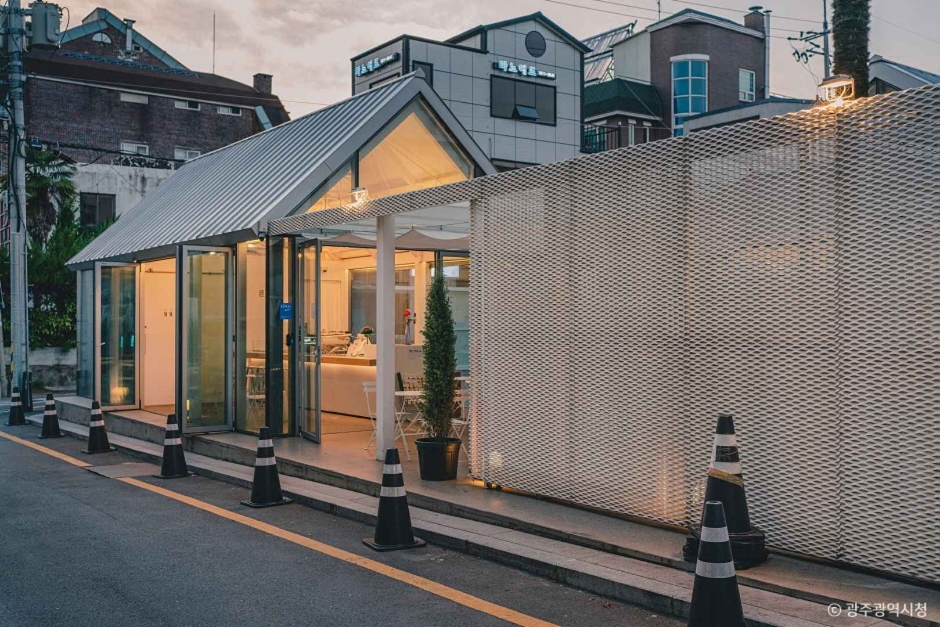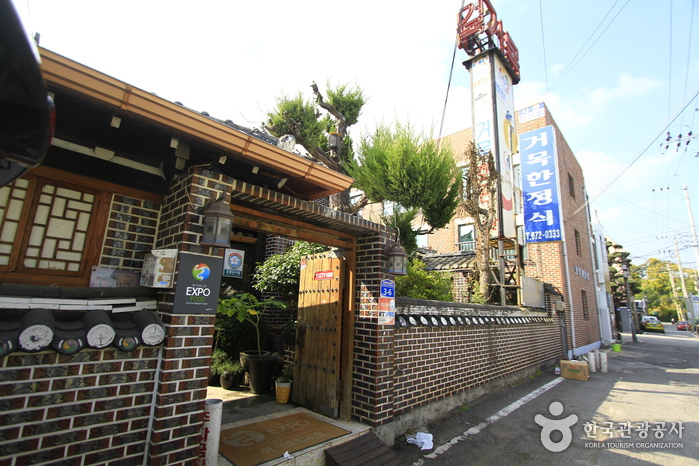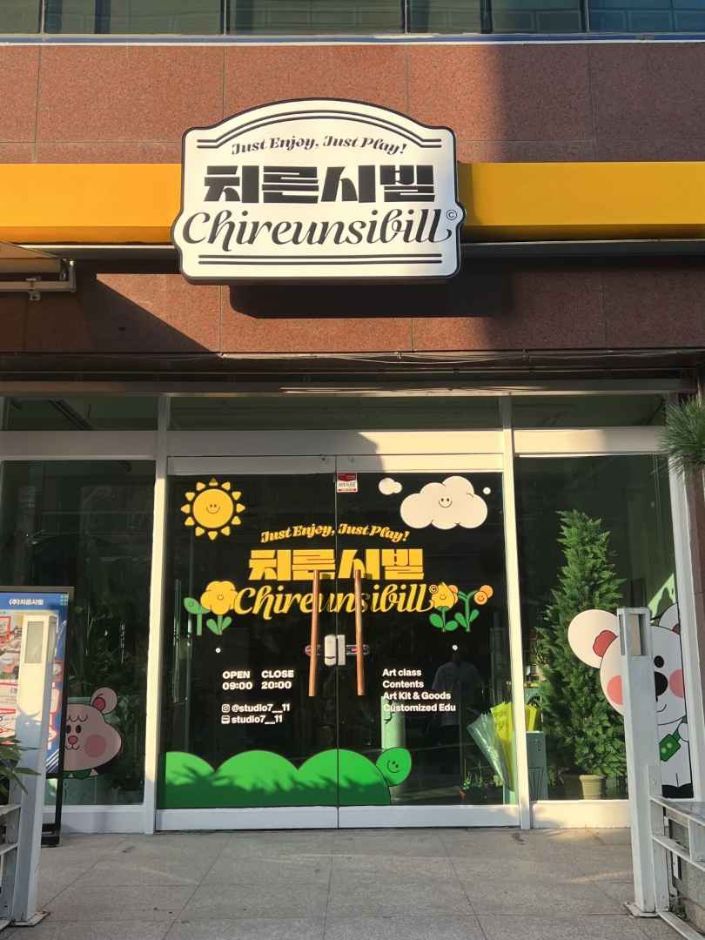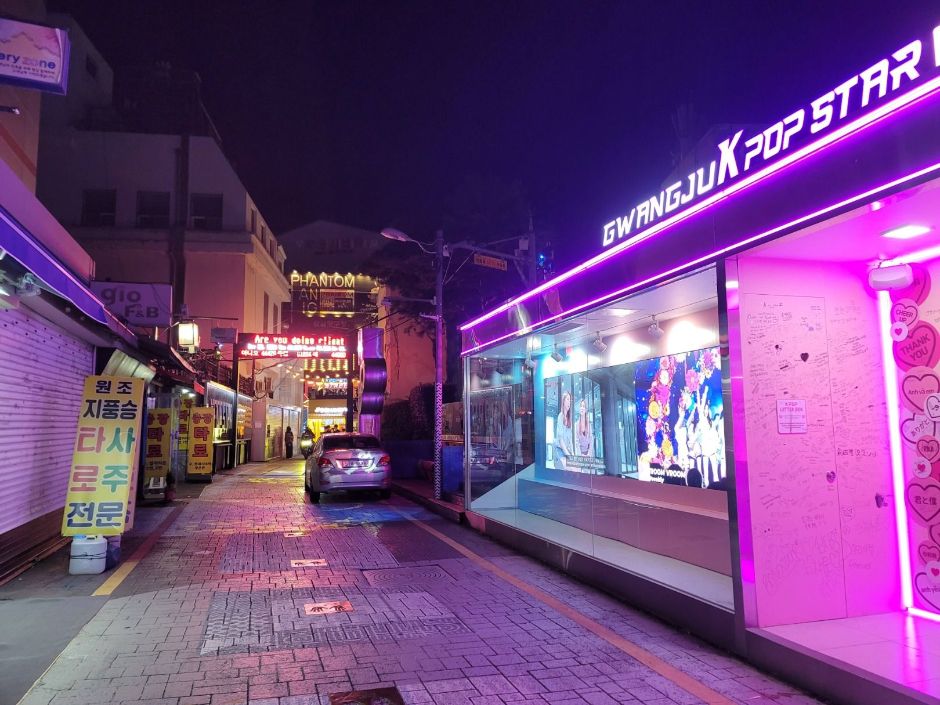Dongnidan-gil Cafe Street (동리단길 카페거리)
964.9M 2025-08-06
Dongmyeong-dong, Dong-gu, Gwangju
Dongridan-gil Cafe Street, once an affluent neighborhood filled with opulent homes and traditional hanok houses, is now a popular attraction in Gwangju. The street is lined with various cafes, each boasting its own unique menu and interior, perfect for those seeking unique menus and picture-worthy spots. Surrounding the Cafe Street, there are many parks, wall murals, and art installations, making it an ideal place for a leisurely stroll or a relaxing break.
MLB - Chungjang-ro Branch [Tax Refund Shop] (엠엘비 충장로점)
976.4M 2024-04-16
82-2, Chungjang-ro, Dong-gu, Gwangju
-
ABC-Mart - Gwangju Chungjang-ro Branch [Tax Refund Shop] (ABC마트 GS광주충장로)
984.1M 2024-04-16
GS Gwangju Chungjang-ro Branch, 83, Chungjang-ro, Dong-gu, Gwangju
-
Converse - Gwangju Chungjang-ro Branch [Tax Refund Shop] (컨버스 광주충장로점)
991.8M 2024-06-27
83-1, Chungjang-ro, Dong-gu, Gwangju
-
Gwangjuhyanggyo Confucian School (광주향교)
1.0Km 2025-02-04
5 Jungang-ro 107beon-gil, Nam-gu, Gwangju-si
Hyanggyo was a national educational institution during the Joseon dynasty, where the tablets of distinguished Confucian scholars were enshrined, and rituals were held in their honor. In spring and fall, it hosts Seokjeon, a ritual honoring Confucius, along with Seodang (traditional Confucian school) experiences and traditional weddings, offering opportunities to immerse in Confucian culture. In summer, crape myrtle flowers bloom, and in fall, the old ginkgo tree turns golden yellow, beautifully contrasting with the traditional Joseon-style hanok architecture.
ABC-Mart - Gwangju Chungjang-ro 2(i)-ga Branch [Tax Refund Shop] (ABC마트 광주충장로2가)
1.0Km 2024-04-22
89-1, Chungjang-ro, Dong-gu, Gwangju
-
8 Seconds - Chungjang-ro Branch [Tax Refund Shop] (에잇세컨즈 충장로점)
1.1Km 2024-04-23
1F, 72, Singwang-ro, Jeju-si, Jeju-do
-
Geomok Hanjeongsik (거목한정식)
1.1Km 2024-02-13
3-6 Cheonbyeonjwa-ro 364beon-gil, Nam-gu, Gwangju
+82-62-672-0333
Geomok Hanjeongsik is a restaurant that specializes in Namdo-style hanjeongsik (Korean table d'hote). Offering a singular menu item, hanjeongsik, guests select their preferred price range and the number of diners, and the dishes are prepared accordingly. A unique feature of this establishment is the seasonal variety of side dishes, ensuring a different culinary experience with each visit. Emphasizing health, the restaurant avoids strong-tasting chemical seasonings. Set in a converted hanok (traditional Korean house), Geomok Hanjeongsik provides a traditional atmosphere, enhancing the dining experience.
Chireunsibill (치른시빌)
1.1Km 2024-10-10
10 Seoseok-ro 85beon-gil, Dong-gu, Gwangju
Chireunsibill was founded in 2022, offering educational programs and art kits with young artists both online and offline. The educational programs are open to all , and cover a wide genre of art types, from painting to music. It is a popular attraction for travelers with children.
Gwangju Chungjang-ro KPOP STAR Street(광주 충장로 케이팝 스타의 거리)
1.1Km 2025-11-05
94 Chungjang-ro, Dong-gu, Gwangju
J-hope Hope World
This street was created to commemorate K-pop stars from Gwangju. Within the street, there are murals depicting singers' album jackets, benches decorated with song titles, handprints, and sculptures. After j-hope personally stopped by the bench decorated with the theme of a BTS song and posted a proof shot, it became a holy place for fans. It is one of the essential courses that 'ARMY' cannot miss because he left a message of appreciation and impressions of visiting this place.

![MLB - Chungjang-ro Branch [Tax Refund Shop] (엠엘비 충장로점)](http://tong.visitkorea.or.kr/cms/resource/00/2886900_image2_1.jpg)
![ABC-Mart - Gwangju Chungjang-ro Branch [Tax Refund Shop] (ABC마트 GS광주충장로)](http://tong.visitkorea.or.kr/cms/resource/83/2886883_image2_1.jpg)
![Converse - Gwangju Chungjang-ro Branch [Tax Refund Shop] (컨버스 광주충장로점)](http://tong.visitkorea.or.kr/cms/resource/71/3314671_image2_1.jpg)

![ABC-Mart - Gwangju Chungjang-ro 2(i)-ga Branch [Tax Refund Shop] (ABC마트 광주충장로2가)](http://tong.visitkorea.or.kr/cms/resource/79/2886879_image2_1.jpg)
![8 Seconds - Chungjang-ro Branch [Tax Refund Shop] (에잇세컨즈 충장로점)](http://tong.visitkorea.or.kr/cms/resource/88/2886888_image2_1.jpg)



 English
English
 한국어
한국어 日本語
日本語 中文(简体)
中文(简体) Deutsch
Deutsch Français
Français Español
Español Русский
Русский